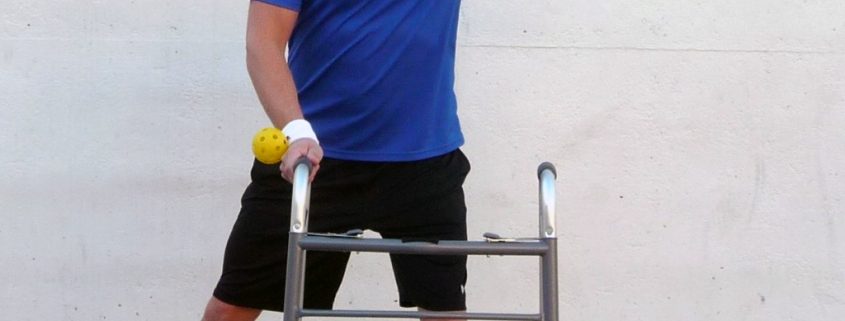
Strategies Incorporating Visual Cues to Improve Amplitude of Movement for Those Living with Parkinson’s
Parkinson’s disease leads to lower levels of dopamine in the brain due to which the patient’s mobility range is seriously compromised. This includes the following two states.
· Akinesia
It is described as complete inability of the patient to initiate ambulation, small shuffling stutter steps, and a normal gait that suddenly freezes. These episodes are known as the ‘off’ periods experienced by patients suffering from Parkinson’s disease, several times daily.
· Dyskinesia
This condition prevails in the presence of dopamine, where patients experience uncontrollable and excessive muscular activity. This pertains to super sensitivity to dopamine and is known as the so-called ‘on’ state.
Several new strategies to improve the overall quality of life in patients with Parkinson’s disease are now being evolved. One of the theories related to the incorporation of visual cues to improve the movement patterns is called ‘Kinesia Paradoxa’.
Kinesia Paradoxa- Benefits of Visual Cues
This phenomenon states that the presence of visual cues in subjects with Parkinson’s disease can help them overcome Akinesia and other gait problems, even if they are unmedicated or undermedicated. These visual cues evoke a response in individuals by simulating marks or objects perceived by the subject as stepping over.
Vection
Visual cues depend on the theories of Vection, a sense of motion experienced by an individual while moving. The use of the components of vection, such as optical flow and expansion, in visual cues for patients with Parkinson’s disease can prove to be beneficial in improving the amplitude of their movement.
· Optical Flow
Optical flow is a component of vection in which the patient perceives the objects in the environment to be moving as they advance in their gait pattern. This is a useful strategy to provide visual cues for patients with Parkinson’s disease because it is an unconscious perception through the peripheral vision, resulting in sustained gait.
· Expansion
Expansion is another component of Vection that can be used as a strategy to provide visual cues to patients with Parkinson’s disease. The central vision is responsible to perceive expansion and sustain gait.
Visual Assistive Devices
Apart from the use of the mentioned phenomena for incorporating visual cues in improving the movement of patients with Parkinson’s disease, the use of visually assistive devices to enable normal gait are also useful in augmenting the patients’ perception. These devices work by providing visual cues to the patients while still maintaining the vision of the real world.
· Central Field Cueing Device
To facilitate the movement in patients with Parkinson’s disease, an array of objects can be arranged at stride length intervals on the floor. The central field cueing device is designed to project the virtual equivalent of this set up in the real world.
· Virtual Vection Glasses
The virtual vection glasses are used to sustain unconscious gaits in patients with Parkinson’s disease. This is achieved by engineering the glasses to produce a motion of an array of lights at the extreme periphery of the eyes. This provides a virtual ‘feedback’ to the patient that he is walking, thussustaining gait.





